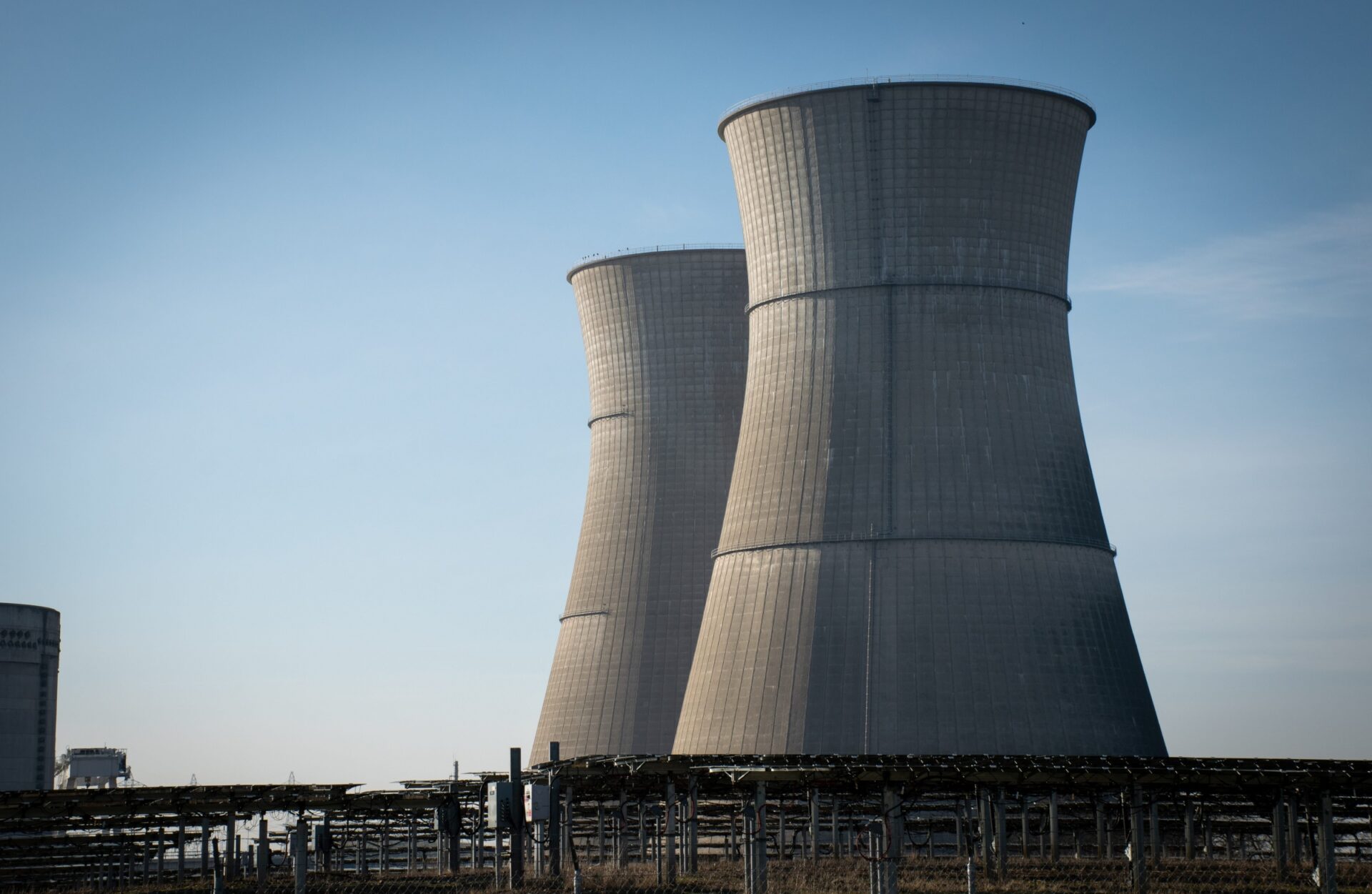
In Poland, the Nuclear Option Is Still on the Table
Could nuclear power generation be a fit for Poland? And what role could the U.S. could play.
Note: This piece was first posted on Forbes on August 27.
Poland has toyed with the idea of nuclear power generation for decades. The first serious plans were established and put into action under communism when construction of the nuclear power plant in Żarnowiec took off. However, slated for completion in 1990, the Żarnowiec project fell through—due to the perfect storm of the Chernobyl disaster, Poland’s economic and political collapse, and eventually its economic and political transformation.
But the idea of nuclear generation within Poland’s territory has never dissipated completely and recently has taken a stronger hold on policymakers. This time, nuclear is not only a way to bring in more energy into Poland’s electricity mix, but also decarbonize the economy and improve security through energy diversification. Especially with respect to the latter, the U.S. could play a significant role.
The “Nuclear Option”
Almost half of Poland’s primary energy consumption and approximately three quarters of electricity comes from coal. The continuing dependency on coal is tied to Poland’s vast domestic supplies, the well-paying mining jobs, political power of mining unions, as well as its communist legacy: the regime associated the coal industry with economic development and stability.
But today coal in Poland is struggling. In 2018 Poland unearthed a historic low of 63.4 mln tonnes of coal, a third what it produced in 1989. Coal consumption in Poland has also fallen. Coal has become more costly as the available reserves are deeper and more difficult to access, which incentivizes coal imports, including from Russia. Additionally, EU regulations geared toward addressing climate change have put a price on carbon emissions.
Unlike Germany, Poland has not committed itself to phasing out coal completely. However, governmental plans underscore that, while keeping coal consumption constant at absolute levels, the expected growth in energy demand would be addressed by other sources, including: natural gas, renewable energy, and—potentially—nuclear.
But while natural gas policy and increasingly renewable energy investment have both been put into action, the future of nuclear energy in Poland is still uncertain. Over the years many have attempted to jumpstart the nuclear power investment, without success. Most recently, Poland’s energy minister Krzysztof Tchórzewski announced a nuclear speed-up that would see the first nuclear power plant by 2033. The plan envisages 6-9 GW of nuclear power until 2045.
The official document that would outline the development of nuclear energy in Poland is yet to be approved by the government. Two key publications, Polish Energy Policy through 2040 and Polish Nuclear Energy Program (PPEJ), are both being prepared and, according to the authors’ unofficial sources, both documents could get green lighted this fall.
There are several benefits Poland could accrue if it succeeds in building nuclear power generation:
1. Energy Security
As a domestic source of energy, nuclear could support Poland’s growing energy demand and/or provide a substitute for increasingly cost-ineffective and aging coal generation. Nuclear could step in to help balance the grid as base generation without increasing Poland’s dependency on foreign energy. It could help insulate the country from potential swings in energy prices, especially prices of natural gas. It would also help moderate the effects of the increasing price of EU’s carbon tax. Last but not least, as a domestically available source, it could benefit Poland geopolitically by preventing dominance of any foreign energy supplier.
2. Environmental Benefits
Because nuclear power generates no CO2, it could help Poland’s live up to its commitments within the EU decarbonization process while ensuring a well-balanced energy mix. With nuclear as a base load, Poland could slowly wean itself of coal. It could also use natural gas more sparingly (i.e. fewer emissions), mostly to meet daily and seasonal swings in demand and/or swings in renewable generation related to both intermittency and Poland’s natural limitations, such as few sunny days or low wind intensity.
3. An Alliance Booster
Given serious concerns about non-peaceful purposes of nuclear power, the technology and fuel transfer—even when executed by private companies—is closely monitored by governments. In the case of the U.S. this includes requirement to reach bilateral agreements between exporting and importing countries (i.e. the so-called 123 Agreement). Thus, the technology that Poland chooses for its nuclear power plant(s) can have consequences for Poland’s relationship with the country from which the technology originates. Given Poland’s issues with Russian natural gas supplies, one can be quite certain that Poland will not adopt Russian technology. According to our knowledge the main players for the proposed Polish project are currently companies from France, South Korea, and the United States.
The U.S. Versus the Rest
There are different ways in which companies and countries can become involved in new nuclear power generation projects, including planning, technology transfer, fuel transfer, financing, as well as ownership and plant operation.
Since government involvement is high, nuclear power investment can have geopolitical implications for either party.
For Poland, geopolitical implications are least pronounced in Korean investors, which offer nuclear technology and a track record of successful nuclear projects but lack the geopolitical advantages offered by France or the U.S.
The French option for nuclear power generation provides the benefit of a centralized company EDF, with a ready-to-go offer and the prospect of Polish-French cooperation within the EU policy framework. But France has its own problems with changes in nuclear policy that could be seen as impairing French nuclear companies’ longer term reliability as a nuclear partner.
This leaves the U.S. option. This offers the latest technology of a market-driven approach with multiple private U.S. companies vying for access as well as the security umbrella of U.S. government involvement. As a member of Euroatom, Poland is already a part of the 123 Agreement with the U.S., which allows U.S. companies to transfer nuclear technology. Exercising this option provides an even tighter alliance with the U.S. and emphasizes trust between the countries. Additionally, accepting a U.S. offer would be heeding the U.S. government support for U.S. energy exports. Both, Energy Secretary Rick Perry and President Trump have underlined the importance of U.S. energy exports as a way to ensure energy security and reduce geopolitical influence of Russia in the region. In this context, nuclear power cooperation between the countries (and/or their companies) is seen as part of a larger U.S. strategy that in addition to energy exports also includes U.S. military troop presence.
What About the Cost?
There have been multiple plans for nuclear power generation in Poland, but so far none has gone beyond the planning stage. Of all potential partners, the U.S. seems currently the most engaged in Poland’s plans for nuclear power, including a non-binding agreement on civil nuclear cooperation that the presidents of both countries signed last June. And though no specifics have emerged, there is also an indication that the U.S. may want to become involved financially. This could become an important element given that capital costs associated with nuclear investment are very high.
The decision-makers will also need to consider the competitiveness of nuclear vs. coal, gas, renewables, or any configuration of those three.
A classic Levelized Cost of Electricity Assessment (LCOE) that looks exclusively at the cost to build and operate a power plant often sees renewables as a cheaper options. However, this is not the case for Value-Adjusted Levelized Cost of Electricity (VALCOE) that also includes the cost of storage and the changing value of electricity, which varies over the course of a day. In this case, nuclear becomes competitive against renewable power generation because of the high cost of energy storage needed to address the issues of renewable intermittency. For example, according to 2018 data, LCOE offshore wind cost in Poland was merely 55 euro/MWh, but energy storage added a whopping 209 euro/MWh.
Will Nuclear Energy Happen in Poland After All?
High initial costs of nuclear investment and uncertainty around potential technology breakthrough(s) can rapidly change competiveness of nuclear vs. renewable generation. As a result, the decision whether or not to invest in this long-term venture is not necessarily clear cut and can be influenced by a decision-maker’s subjective assessment of the future.
In Poland, the uncertainty around building nuclear power generation is currently magnified by the upcoming parliamentary elections.
Polls indicate that the incumbent party, Law and Justice (PIS), which considers nuclear power an attractive option, is likely to win again. But fear of social discontent around nuclear energy might hamper the nuclear speed-up announced by the government. At least until the elections conclude, acquiring a majority of parliamentary seats is more than likely to supersede any other issue, including that of nuclear power.
On the other hand, if PIS comes to believe that its majority in the parliament may not materialize, it may push harder to lock a nuclear power project in place or at least make it more difficult for a new parliamentary majority to scrap it after the elections. The latter is a valid option as the main opposition to PIS, the Civic Coalition, opposes building new nuclear generation capacity. According to Civic Coalition leaders, it is too late for nuclear given how long the construction would take. Instead, they say, Poland should push and invest in renewable and decentralized energy.
A plethora of considerations—cost, competitiveness, environment, geopolitics—that enters the nuclear generation calculus and the uncertainty around this long-term investment, make the decision particularly difficult. It remains to be seen whether the Polish government moves ahead with nuclear power. If so, the choice of a foreign supplier will have a lot to do with the decision makers’ assessment of the goals that nuclear should achieve. For now, partnering with the U.S. seems to be well aligned with Poland’s goal of energy security and a transatlantic alliance against Russia. But financing, investment options, and economic viability will remain a very important—if not the deciding aspect of the decision.
Anna Mikulska
Senior FellowAnna Mikulska is an expert on European energy markets and energy policy. She is a senior fellow at the Kleinman Center and a fellow in energy studies at Rice University’s Baker Institute for Public Policy.
Wojciech Jakobik
Energy Security Analyst, Jagiellonian InstituteWojciech Jakobik is an energy security analyst at the Jagiellonian Institute and editor in chief of Poland’s Biznes Alert.


